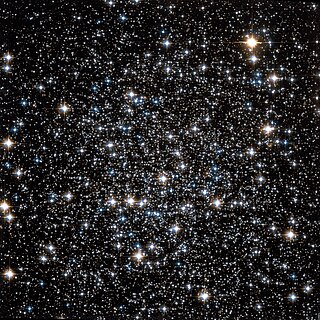This page is based on this
Wikipedia article Text is available under the
CC BY-SA 4.0 license; additional terms may apply.
Images, videos and audio are available under their respective licenses.

The Upsilon meson is a quarkonium state formed from a bottom quark and its antiparticle. It was discovered by the E288 experiment team, headed by Leon Lederman, at Fermilab in 1977, and was the first particle containing a bottom quark to be discovered because it is the lightest that can be produced without additional massive particles. It has a lifetime of 1.21×10−20 s and a mass about 9.46 GeV/c2 in the ground state.
The General Instruction of the Roman Missal (GIRM)—in the Latin original, Institutio Generalis Missalis Romani (IGMR)—is the detailed document governing the celebration of Mass of the ordinary form of the Roman Rite of the Catholic Church since 1969. It is printed at the start of recent editions of the Roman Missal.
Vela X-1 is a pulsing, eclipsing high-mass X-ray binary (HMXB) system, associated with the Uhuru source 4U 0900-40 and the supergiant star HD 77581.
The X-ray emission of the neutron star is caused by the capture and accretion of matter from the stellar wind of the supergiant companion. Vela X-1 is the prototypical detached HMXB.

NGC 288 is a globular cluster in the constellation Sculptor. Its visual appearance was described by John Dreyer in 1888. It is located about 1.8° southeast of the galaxy NGC 253, 37′ north-northeast of the South Galactic Pole, 15′ south-southeast of a 9th magnitude star, and encompassed by a half-circular chain of stars that opens on its southwest side. It can be observed through binoculars. It is not very concentrated and has a well resolved, large 3′ dense core that is surrounded by a much more diffuse and irregular 9′ diameter ring. Peripheral members extend farther outward towards the south and especially southwest.

LHS 288 is a red dwarf around 15.8 light years from the Sun, the closest in the constellation Carina. It is far too faint to be seen with the unaided eye, with an apparent magnitude of 13.92.
Kepler-34 is an eclipsing binary star system in the constellation of Cygnus. Both stars have roughly the same mass as the Sun, therefore both are spectral class G. They are separated by 0.22 AU, and complete an eccentric orbit around a common center of mass every 27 days.

(300163) 2006 VW139, provisional designations 2006 VW139 and P/2006 VW139, as well as periodic cometary number 288P, is a kilometer-sized asteroid from the outer regions of the asteroid belt and the first "binary main-belt comet" ever discovered.

K2-288Bb is a super-Earth or mini-Neptune exoplanet orbiting in the habitable zone of K2-288B, a low-mass M-dwarf star in a binary star system in the constellation of Taurus about 226 light-years from Earth. It was discovered by citizen scientists while analysing data from the Kepler spacecraft's K2 mission, and was announced on 7 January 2019. K2-288 is the third transiting planet system identified by the Exoplanet Explorers program, after the six planets of K2-138 and the three planets of K2-233.







